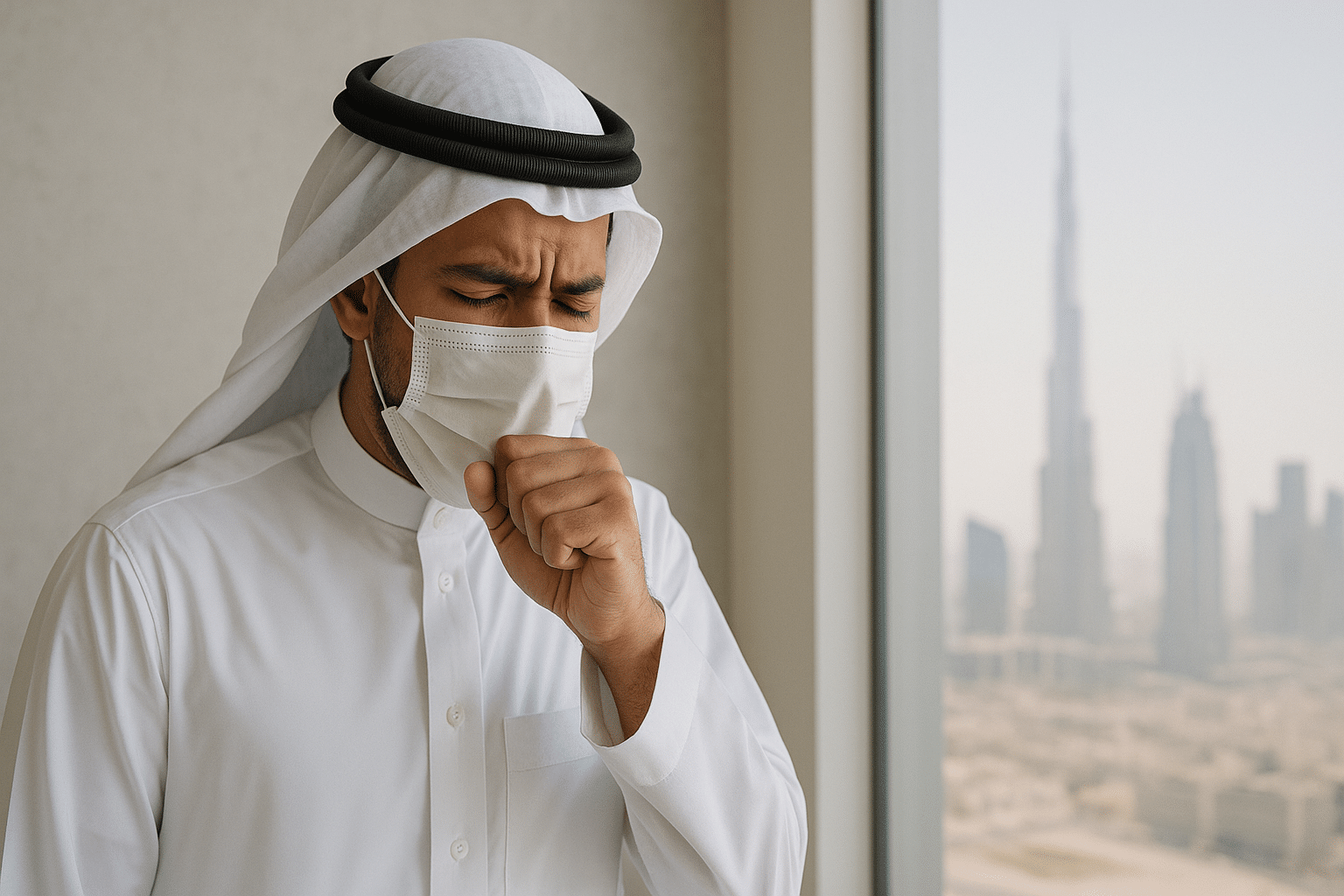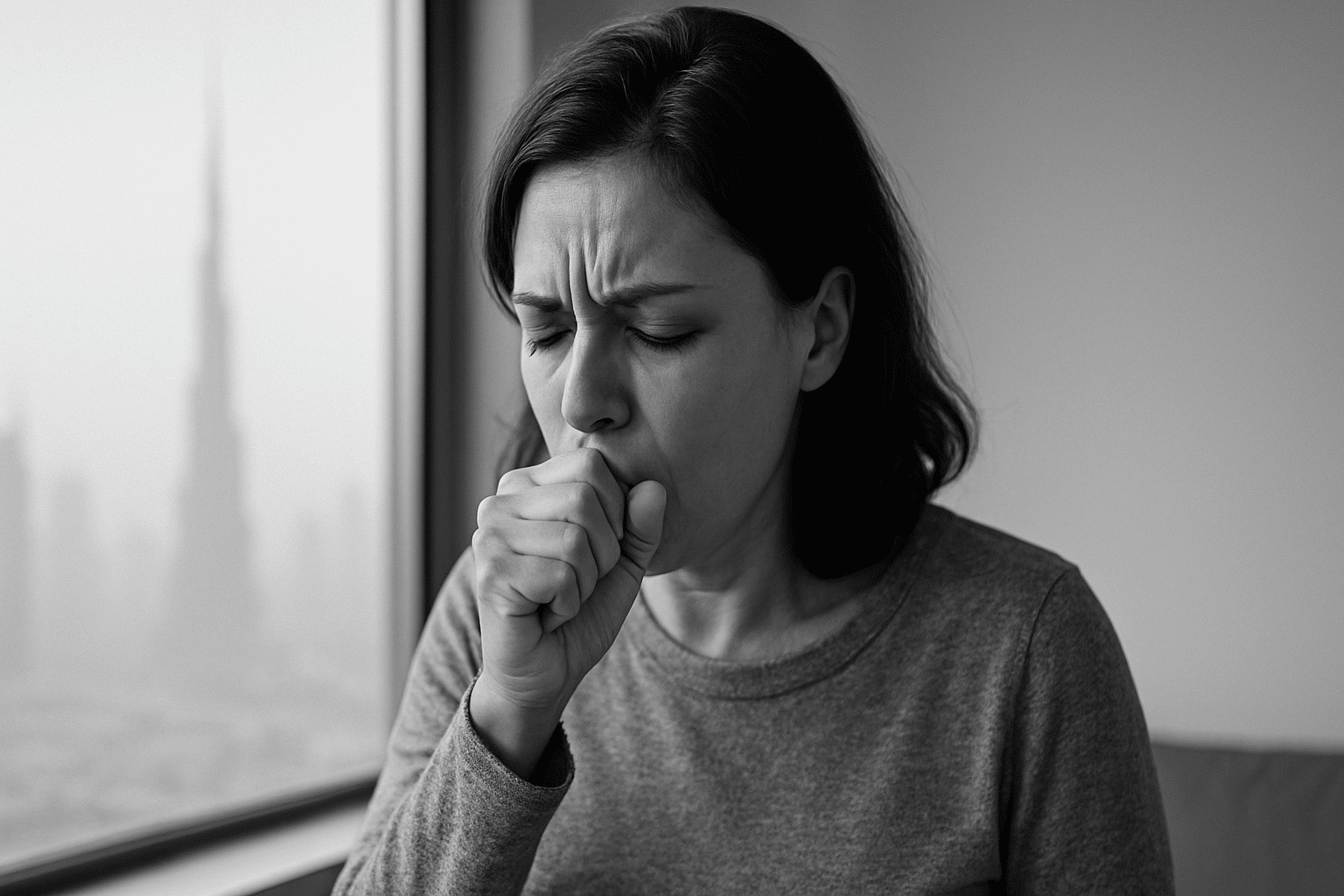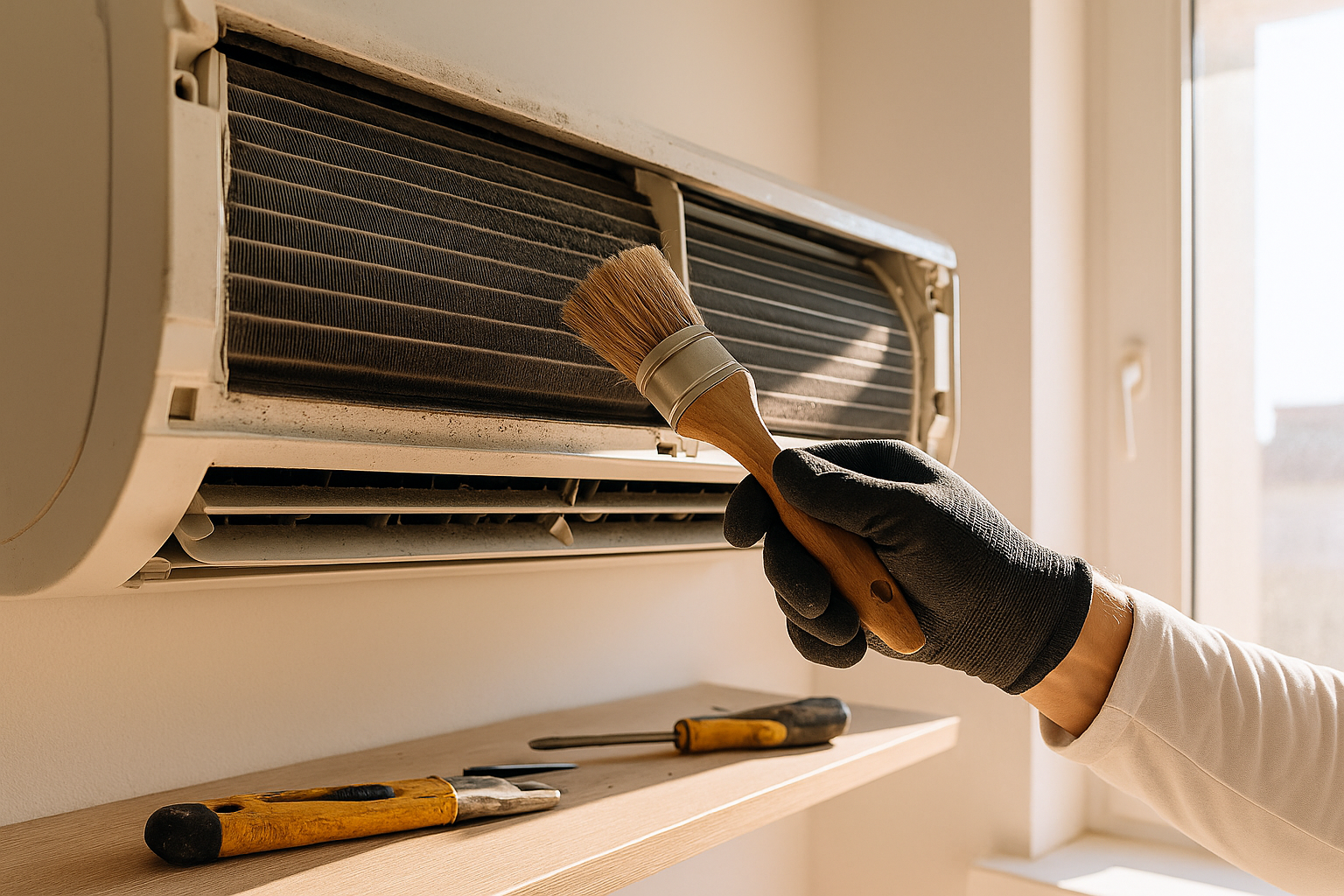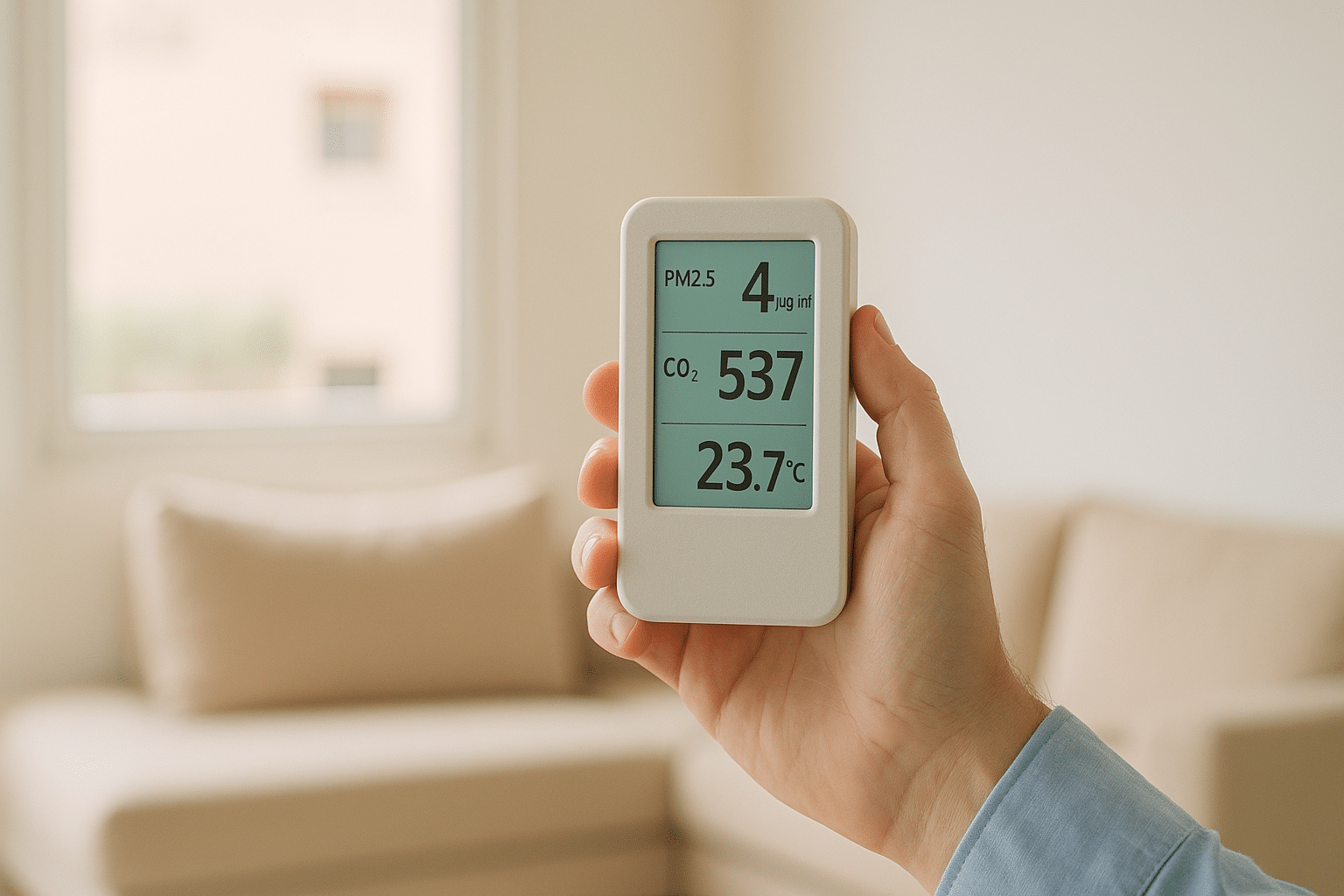
10 Critical Insights on Poor Indoor Air Quality Health Risks Dubai and How to Maintain Your AC
Table of Contents
Contents
- 1 Table of Contents
- 2 Understanding Poor Indoor Air Quality Health Risks Dubai
- 3 Primary Causes of Poor Indoor Air Quality in Dubai Homes
- 4 Health Impacts Assigned to Poor Indoor Air Quality Health Risks Dubai
- 5 How AC Systems Affect Indoor Air Quality in Dubai
- 6 Practical Steps to Improve Indoor Air Quality in Dubai Residences
- 7 FAQ: Expert Guidance on AC Maintenance
- 8 Important Regulations and Standards in Dubai for Indoor Air Quality
- 9 Choosing Professional Services for Air Quality and AC Maintenance in Dubai
- 10 Role of Dubai Municipality and Health Authorities in Monitoring Indoor Air Quality
- 11 Conclusion and Actionable Tips to Protect Your Health
- 12 Understanding the Health Risks of Poor Indoor Air Quality in Dubai
Understanding Poor Indoor Air Quality Health Risks Dubai
Poor indoor air quality health risks Dubai residents face is an urgent concern as urbanization and climate conditions intensify the need for controlled indoor environments. Indoor air pollutants can accumulate rapidly, especially in sealed or air-conditioned spaces prevalent across Dubai’s residential and commercial buildings.
With soaring temperatures and dust storms common in urban Dubai neighborhoods such as Business Bay and Dubai Marina, maintaining adequate indoor air quality is a challenge that directly influences public health.
Primary Causes of Poor Indoor Air Quality in Dubai Homes
Identifying the main contributors to low indoor air quality is essential for prevention. In Dubai settings, these causes include:
- Dust accumulation: Due to the desert environment, dust infiltration from outside is frequent even with windows closed.
- Inadequate AC maintenance: Air conditioning units, if not serviced regularly, harbor mold and bacteria, further degrading air quality.
- Volatile Organic Compounds (VOCs): Emissions from paints, furniture, and cleaning products can pollute indoor air.
- High humidity levels: Occasionally inside air-conditioned spaces, promoting mold growth.
- Crowded indoor spaces: High occupancy increases CO2 and other contaminants.
Because AC units circulate and cool air continuously in Dubai’s hot climate, understanding how they contribute to or mitigate poor indoor air quality health risks Dubai-wide is critical.
Health Impacts Assigned to Poor Indoor Air Quality Health Risks Dubai
Exposure to poor indoor air quality health risks Dubai residents experience can lead to several acute and chronic health conditions:
- Respiratory issues: Asthma exacerbation, bronchitis, and chronic obstructive pulmonary disease (COPD) symptoms often worsen indoors where air quality is poor.
- Allergic reactions: Mold spores, dust mites, and other allergens provoke sneezing, itchy eyes, and skin rashes.
- Fatigue and headaches: Pollutants like VOCs and carbon monoxide can cause neurological symptoms including dizziness and concentration difficulties.
- Immune system effects: Prolonged exposure may weaken immune responses, increasing vulnerability to infections.
Studies based on local hospital admissions in Dubai corroborate these health risk patterns, underlining the urgency for indoor air mitigation strategies.
How AC Systems Affect Indoor Air Quality in Dubai
Air conditioners in Dubai, often running at full capacity for the majority of the year, play a dual role: they can improve or degrade indoor air quality depending on maintenance and operation standards.
Without routine cleaning, filters clog with dust and microbial growth which is then recirculated, worsening poor indoor air quality health risks Dubai residents face. Efficient, well-maintained AC systems use high-efficiency particulate air (HEPA) filters or UV sterilization to reduce airborne contaminants.
Failing to maintain AC systems leads to increased humidity levels and biofilm buildup on coils, attracting bacteria and mold, both harmful to respiratory health.
Practical Steps to Improve Indoor Air Quality in Dubai Residences
Preventing poor indoor air quality health risks Dubai families encounter involves a mix of behavioral habits and technical measures. Key actionable steps include:
- Regular AC maintenance: Schedule service with certified professionals especially those specializing in Dubai’s climatic conditions.
- Use of air purifiers: Devices with HEPA filters help reduce particulate matter indoors.
- Ventilation improvement: Introduce fresh air circulation during cooler times of the day to reduce pollutant buildup.
- Select low-VOC products: Choose eco-friendly paints and cleaning agents to limit chemical emissions.
- Humidity control: Maintain indoor relative humidity between 40%-60% to inhibit mold growth.
These steps not only mitigate poor indoor air quality health risks Dubai households regularly contend with but also promote long-term wellness.
FAQ: Expert Guidance on AC Maintenance
Why is AC maintenance vital for indoor air quality?
AC systems often become reservoirs for dust, bacteria, and mold. Maintenance ensures filters and coils are clean, preventing these contaminants from circulating.
How often should AC units be serviced in Dubai?
Due to the heavy usage and dusty environment, AC units should ideally be inspected and cleaned every 3 to 6 months to maintain air quality.
Can AC maintenance help reduce allergies and asthma?
Yes, by removing allergenic particles and microbes, proper AC upkeep significantly lowers indoor triggers for allergic reactions and asthma flare-ups.
Where can I find professional AC maintenance in Dubai?
For reliable service in Dubai specifically, companies like Saniservice offer expert AC maintenance tailored to regional needs.
Important Regulations and Standards in Dubai for Indoor Air Quality
Dubai promotes indoor air health through various standards and regulations. The Dubai Municipality enforces building codes requiring ventilation and air handling system specifications to prevent health risks associated with poor indoor air quality for Dubai occupants.
The Dubai Health Authority (DHA) also issues guidelines focusing on public health risks relating to indoor air, mandating schools, offices, and residential buildings maintain quality control measures. The Emirates Authority for Standardization and Metrology (ESMA) endorses product certifications for air purifiers and HVAC systems ensuring compliance with environmental safety.
Choosing Professional Services for Air Quality and AC Maintenance in Dubai
Hiring expert service providers is critical to ensure effective mitigation of poor indoor air quality health risks Dubai residences and workplaces suffer from. When selecting professionals, consider the following:
| Factor | Why It Matters |
|---|---|
| Certification and licensing | Ensures the company meets Dubai Municipality and DHA standards |
| Experience in Dubai climate | Specialized knowledge to handle desert dust and high temperatures |
| Use of advanced cleaning technologies | Guarantees removal of microscopic allergens and microbial growth |
| Customer reviews and reputation | Reflect reliability and service quality |
Engaging a company like Saniservice, expert in managing poor indoor air quality health risks Dubai homes face, ensures your AC units are professionally maintained with Dubai’s indoor air quality challenges in mind.
Role of Dubai Municipality and Health Authorities in Monitoring Indoor Air Quality
Dubai Municipality plays an essential part in overseeing air quality regulations, infrastructure inspections, and licensing HVAC contractors. They conduct periodic assessments to ensure compliance with indoor air quality requirements that reduce poor indoor air quality health risks Dubai residents may otherwise suffer.
The Dubai Health Authority works alongside to monitor health trends and issue advisories on air quality concerns, promoting public awareness campaigns about AC maintenance and indoor pollutant sources.
These local agencies coordinate with industry bodies like NADCA, which sets international standards relevant to mitigating poor indoor air quality health risks Dubai residents can encounter, adapting international best practices within the Dubai context.
Conclusion and Actionable Tips to Protect Your Health
Understanding and acting on poor indoor air quality health risks Dubai households confront is pivotal in safeguarding well-being. To recap, maintaining your AC rigorously, following Dubai’s air quality regulations, and choosing certified local service providers like Saniservice can dramatically reduce indoor pollutants and associated health hazards.
Take action today: Schedule frequent AC inspections, invest in air purifiers certified by ESMA, and stay informed about updates from Dubai Municipality and DHA. Your health and comfort in Dubai’s unique climate depend on proactive indoor air quality management.
Understanding the Health Risks of Poor Indoor Air Quality in Dubai
Indoor air quality (IAQ) is a critical element of a healthy living and working environment, especially in Dubai’s unique urban and climatic context. Despite the city’s rapid development and modernization, poor indoor air quality health risks Dubai residents face remain a significant concern. Given Dubai’s hot climate, reliance on air conditioning, and the dense urban settings of areas like Downtown Dubai and Dubai Marina, pollutants can easily accumulate indoors, impacting residents’ health in various ways. This section explores the main health consequences linked to poor indoor air quality in Dubai, shedding light on the severity of these risks and their impact on different population groups.
Common Indoor Pollutants Affecting Health in Dubai
Indoor air pollutants can range from chemical contaminants to biological agents, often exacerbated by factors specific to Dubai’s environment such as high dust levels, humidity, and air conditioning system maintenance. The most common sources of indoor air pollution in Dubai include:
- Particulate matter and dust: Dust storms and desert winds frequently bring fine particles indoors, especially in older buildings or those with poor sealing.
- Volatile Organic Compounds (VOCs): Emitted by paints, cleaning products, furniture, and building materials, VOCs can accumulate in enclosed spaces.
- Biological contaminants: Mold spores thrive in poorly ventilated, humid environments caused by insufficient air conditioning maintenance.
- Combustion pollutants: Gas stoves, incense burning, and smoking indoors can release carbon monoxide (CO), nitrogen dioxide (NO2), and other hazardous gases.
These pollutants, often overlapping, contribute to the poor indoor air quality health risks Dubai residents face daily, influencing both acute symptoms and long-term chronic conditions.
Health Impact Overview: Short-term and Long-term Risks
Exposure to poor indoor air quality in Dubai can trigger a variety of health effects, which range in severity depending on the pollutant type, concentration, and individual vulnerability. Recognizing these risks is essential for residents, building managers, and healthcare professionals alike.
Short-term health effects are usually the first to manifest and may include:
- Respiratory irritation, such as coughing, wheezing, and throat dryness.
- Eye irritation, burning sensation, or excessive tearing.
- Headaches and dizziness due to volatile organic compounds or carbon monoxide exposure.
- Fatigue and difficulty concentrating, occasionally termed “sick building syndrome.”
These symptoms often prompt people to seek medical advice or reconsider their indoor environment, especially in heavily air-conditioned offices in Business Bay or residential buildings in Arabian Ranches. However, failing to address these can pave the way for more serious health challenges.
Long-term health effects emerge with prolonged or repeated exposure, including:
- Chronic respiratory diseases such as asthma, chronic bronchitis, and chronic obstructive pulmonary disease (COPD).
- Allergic reactions and sensitization to mold or dust mite allergens common in humid, poorly ventilated Dubai homes.
- Increased risk of cardiovascular diseases linked to fine particulate exposure.
- Potential developmental issues in children, including impaired lung function and increased susceptibility to respiratory infections.
According to Dubai Health Authority (DHA) reports, the prevalence of asthma and allergy-related illnesses has been rising, underscoring the need for better indoor air quality management. Vulnerable populations such as children, elderly residents, and those with pre-existing conditions are particularly at risk.
Specific Vulnerabilities in Dubai’s Unique Context
While indoor air quality concerns exist worldwide, Dubai’s climatic, architectural, and social factors create specific challenges:
- Climate and air conditioning dependency: Dubai’s intense heat necessitates continuous use of AC systems. Poorly maintained HVAC units can circulate dust, mold spores, and VOCs, exacerbating respiratory problems. Lack of regular filter changes and system cleaning can intensify these issues.
- Urban density and indoor time: As Dubai is a highly urbanized city with residences and workplaces in tightly packed areas like Dubai Marina and Nad Al Sheba, residents spend a large portion of their time indoors, increasing their exposure to contaminated air.
- Construction activity: Frequent construction in rapidly developing districts contributes to particulate pollution infiltrating indoor spaces, worsening the overall quality of indoor air.
- Cultural practices: Traditional use of incense (oud) burning indoors adds to particulate and chemical loads, posing additional health risks, particularly in poorly ventilated spaces.
Mitigating Health Risks: Guidelines and Best Practices in Dubai
Addressing poor indoor air quality health risks Dubai faces requires a coordinated approach guided by local regulatory frameworks and individual efforts. Dubai Municipality and the Dubai Health Authority have set detailed guidelines to help mitigate these risks in residential and commercial settings.
Key recommended actions include:
- Regular HVAC maintenance: Scheduling routine cleaning and filter replacement according to Dubai Municipality and Dubai Health & Safety standards reduces allergens and pollutants recirculated through air conditioning systems.
- Improving ventilation: Where possible, utilize controlled natural ventilation, or deploy mechanical ventilation systems that comply with the UAE Fire & Life Safety Code to enhance indoor air exchange.
- Reducing pollutant sources: Use low-VOC paints and cleaning agents approved by ESMA (Emirates Authority for Standardization and Metrology), minimize indoor smoking, and limit incense burning in enclosed spaces.
- Monitoring indoor air quality: Employ IAQ monitors or professional assessment through authorized services in Dubai to identify pollutant levels and take corrective measures promptly.
- Educational initiatives: Awareness programs promoted by the Dubai Health Authority encourage residents and businesses to recognize symptoms and understand the impacts of indoor air pollution on health.
Symptoms and When to Seek Medical Advice
Recognizing health symptoms related to poor indoor air quality is essential for timely intervention. Residents experiencing persistent respiratory irritation, unexplained headaches, allergy flare-ups, or fatigue in familiar indoor environments should consult healthcare providers. Dubai’s network of clinics and hospitals under DHA supports diagnosis and management of IAQ-related conditions.
In conclusion, poor indoor air quality health risks Dubai inhabitants face are substantial but manageable with informed action. Understanding the sources, health impacts, and Dubai-specific challenges allows residents and stakeholders to protect health and improve the overall quality of the indoor environment—a crucial factor in sustaining Dubai’s vision for a healthy, modern urban lifestyle.






Leave a Reply